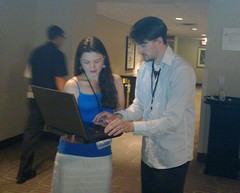My conference travels: Scipy 2011 and HBM 2011
The Scipy 2011 conference in Austin
Last week, I was at the Scipy conference in Austin. It was really great to see old friends, and Austin is such a nice place.

The Scipy conference was held in UT Austin’s conference center, which is a fantastic venue. This is the …

